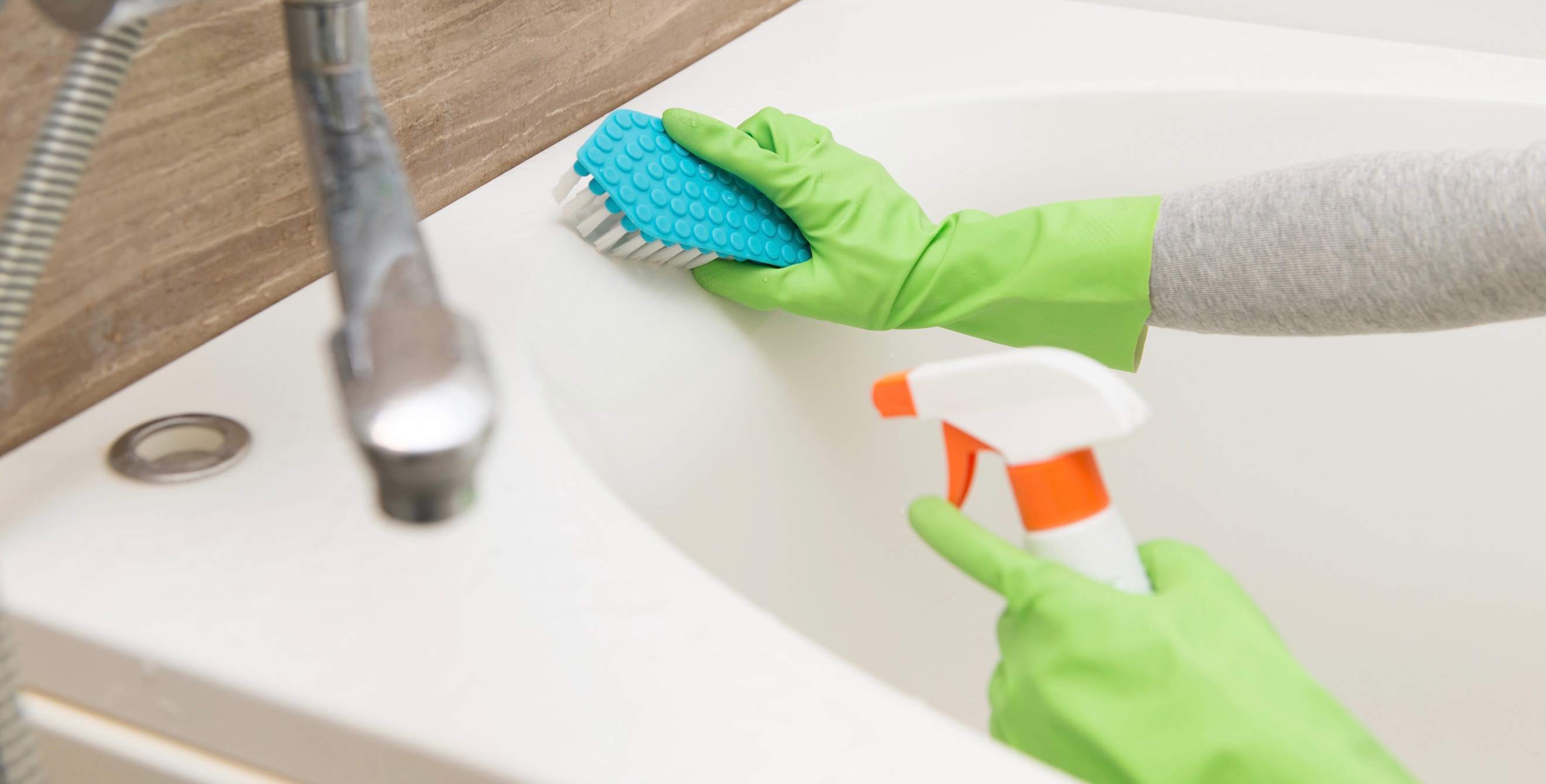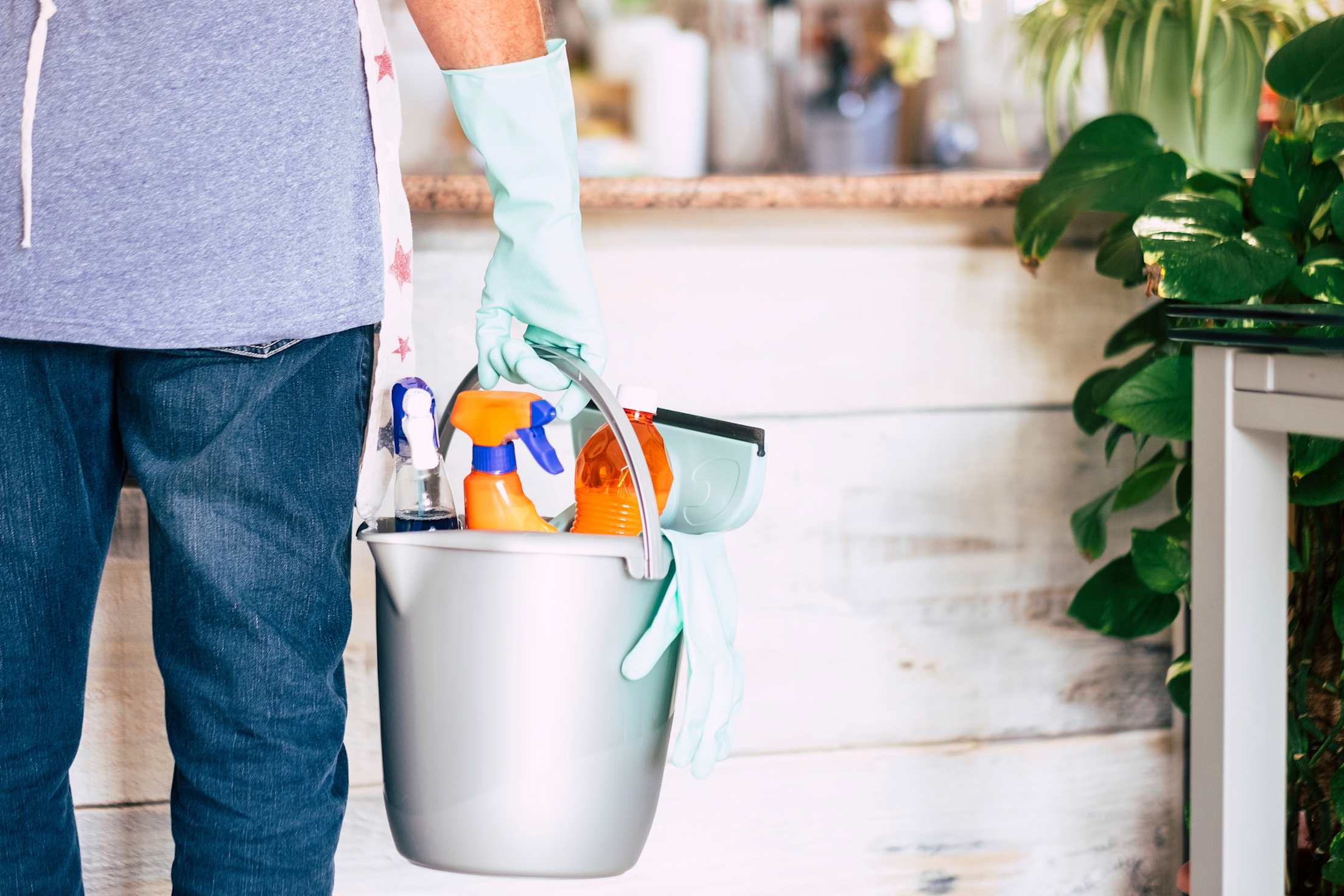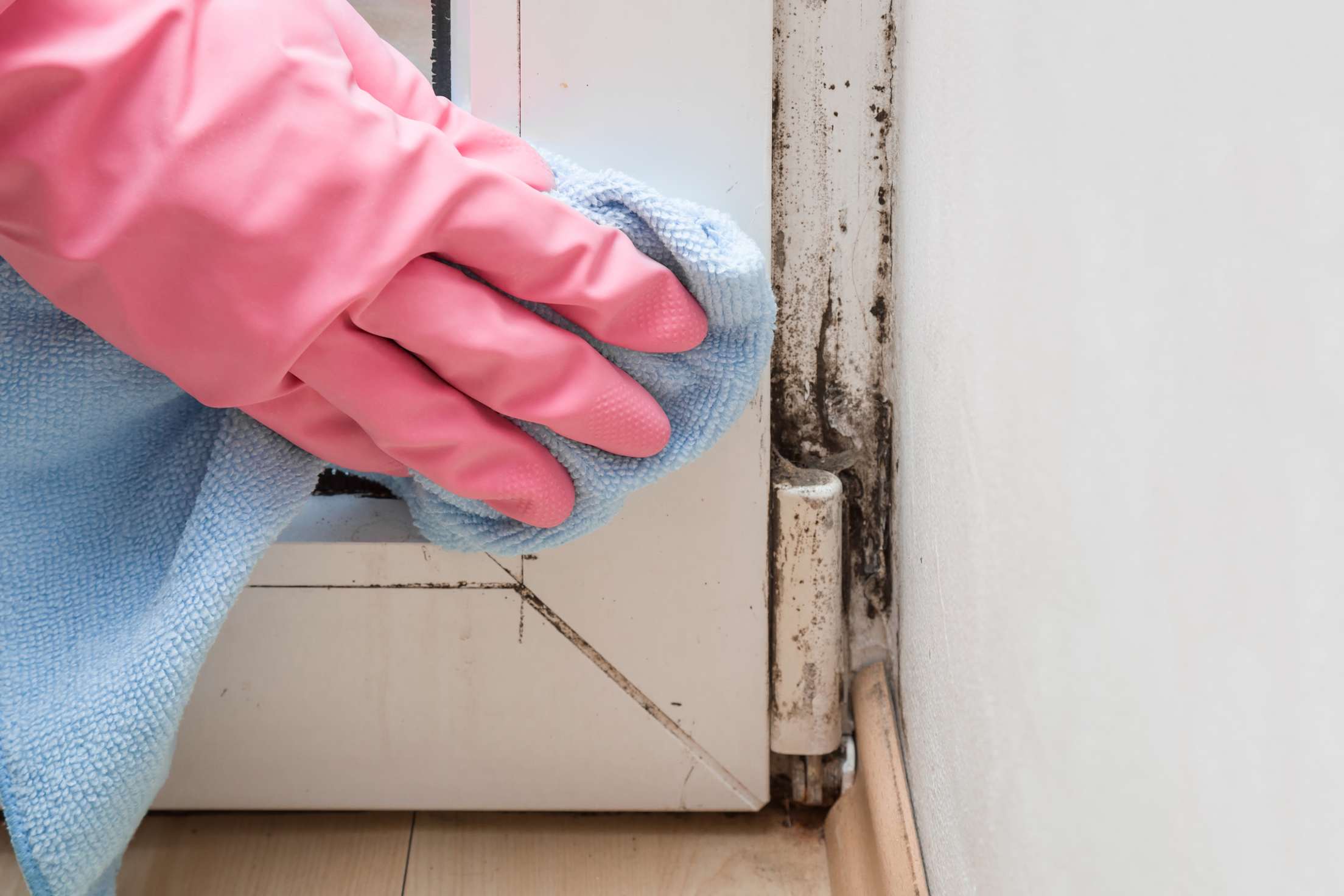
What to Do About Mold in Your Home
Mold can mean trouble for homeowners. Here's what to do if you see (or suspect) mold in your home.

Mold can be an insidious challenge for homeowners. Often, your senses reveal its presence, which is accompanied by discoloration and a musty odor. Mold can damage your home and also affect your health. And without treatment, it’ll continue to flourish and grow.
But what’s the best way to vanquish mold? And can you tackle it yourself, or do you need to call in the pros for remediation? We spoke to mold experts to find out exactly what homeowners need to know.
What is mold and why is mold such a big problem?
Mold is a type of fungus and you’ll find it nearly anywhere there’s moisture, both inside and outside your home. It has existed since Old Testament days, says Doug Hoffman, executive director of the National Organization of Remediators and Mold Inspectors (NORMI), who notes mold is mentioned in Leviticus.
Many varieties exist. While black mold is often described as toxic, mold’s hue doesn’t typically indicate toxicity; many types of mold can be black. Black mold usually refers to Stachybotrys chartarum, says PuroClean Restoration Services franchise owner Ben Doebler. But even with so-called black mold, there’s no proven connection to health concerns beyond typical mold-related symptoms.
Negative health effects can include an allergic response, headaches, asthma attacks, or irritation to the skin, throat, lungs, or more, according to the U.S. Environmental Protection Agency (EPA). It can also damage your home, rotting walls and drywall, leaving behind unsightly stains, and potentially causing structural issues.
“Mold is ubiquitous,” Hoffman says. So the goal isn’t to rid your home of all mold, but to prevent it from growing and flourishing.
How do you know if you have mold?
If you suspect you have mold, you probably do.
“If it looks like mold and smells like mold, then chances are extremely high that it’s mold,” Doebler says.
Both the Centers for Disease Control and Prevention (CDC) and the EPA say testing for mold generally isn’t necessary. However, if you’re concerned you might have mold but can’t see it or smell it, then a test kit can be helpful to determine if it’s growing somewhere hidden.
Once you determine you have mold, you need to identify and eliminate the moisture that’s creating the friendly growing environment. This can be a simple process or quite complex, since excess moisture may be the result of anything from a damp towel to a leak within the walls, Doebler notes.

Scrub away small areas of mold with cleaning detergent and hot water.
Can you clean mold yourself?
After removing the moisture source, you’ll want to remove the mold itself.
If the area with mold is smaller than about 10-square feet, it’s OK to clean it up on your own, per the EPA. Shower grout issues, for instance, are fine for you to tackle, says Marc Baldwin, owner of Utah-based Delta Restoration Services.
But do take the mold removal seriously. The EPA recommends wearing an N-95 mask, gloves, and goggles throughout the clean-up process.
To remove mold, scrub with a cleaning detergent and hot water. You can also use vinegar or make a paste from baking soda and water. For small areas, Doebler recommends using dish detergent and a damp towel, and then following up with an EPA-registered fungicide. As for bleach, the EPA does not recommend its use for routine mold cleanup. (Benefect offers an effective, all-natural line of mold cleanup products, says Doebler.)
After cleaning, let the area dry completely. Do not repaint or regrout until the area is mold-free. If you still see visible signs of mold, it’s possible you haven’t fully resolved the issue. “The only way to know for sure if the mold is non-viable is to have a mold test done, which can be performed by an industrial hygienist,” Doebler says. If the mold has infiltrated a porous material or surface—think rugs, furniture, grouting, and so on—you’ll likely need to discard it.
When do you need professional mold remediation?
Calling in the experts is sometimes your best bet. You might not be able to identify all the areas with mold, or may only tackle the surface, without realizing there’s a bigger issue below or behind it. Plus, mold spores reproduce rapidly and “can spread quickly through the air to other unaffected areas of your home,” says Doebler.
Professionals should deal with any mold that covers more than 10 square feet, per the EPA, but the size of the job isn’t the only factor. If you have a moisture-creating condition in your home—say, dry rot on the exterior—it’s worth calling in the pros to see if the rot may have spread inside, leading to mold growth. That’s true even if you can’t see or smell the signs of mold. “It’s time to call in professionals if you can’t determine where the source of the moisture is coming from,” Doebler says.
The cost will depend largely on the situation. Cleaning and regrouting a tub is a smaller task than removing and replacing drywall in your living room, for instance. “If mold is growing on the structure of the home, it can be removed with thorough cleaning as long as it hasn’t compromised the integrity of the material,” Doebler says. Depending on what led to the mold growth, your homeowners insurance may offer some coverage for remediation. But potential coverage depends on your specific policy. Reach out to your insurance agent for more information.
Unless the problem is quite severe or an extensive area needs to be contained, you’ll likely be able to live in your home during the remediation process, notes Baldwin. An exception would be if the mold is affecting your health. Immunocompromised individuals and those who suffer from asthma are at highest risk, along with very young children and the elderly, especially those with respiratory ailments or other illnesses.

Ventilate damp areas in your home to help avoid mold growth.
How can you find a mold pro?
Not just anyone can safely remove mold. While you want to deal with the problem quickly, take the time—after you’ve stopped the moisture from accumulating—to find a qualified professional.
- Look for certifications: Make sure the company has certification from a nationally recognized organization, Hoffman advises, such as NORMI or the IICRC’s Applied Microbial Remediation Technician (AMRT) certificate.
- Check for experience: Experts do more than scrub. "A professional mitigation company will be able to set containments with negative air running through HEPA filters to ensure spores cannot spread throughout the home,” Doebler says. And, they’ll suit up in personal protective equipment beyond gloves, a mask, and goggles, Baldwin points out. Inquire about the process and safety considerations.
- Reach out to previous customers: Ask the company to share contact information for at least three customers, Hoffman recommends. “It’s amazing what you can find out if you ask,” he says—a quick phone call can reveal if the work was done properly and effectively, and most importantly, if the mold is still gone.
How can you prevent mold?
Mold in your home is an unpleasant, inconvenient, and potentially costly concern. Your best bet, therefore, is to stop it from flourishing in the first place. Here are some tips to prevent mold growth.
- Dry your home after a flood—fast. Get rid of any moisture from a flood, whether it’s due to a storm or overflowing tub, within two days, per the CDC.
- Run the fan: After a shower, open up a window or run a fan until the moisture has dissipated. Ventilate other damp areas in your home, too.
- Check the humidity levels: Aim for a humidity level between 30 and 50 percent, per the EPA. You can buy a hygrometer to measure the humidity in your home. If you find high humidity levels, look into using a dehumidifier.
- Look around: Once a month, check under your sinks and around plumbing fixtures to make sure there aren’t leaks. Even a small leak can lead to mold, and it’s the homeowner’s responsibility to find and address those issues, reminds Doebler. Don't forget hidden places too. Baldwin recommends pulling out your fridge and other big appliances. Basically, make moisture your home’s enemy.
Smart Tip: A flood damaged home requires clean up then repairs. Follow these tips for addressing any damage to your home caused by flooding, including what to do if you have flood insurance.
It's common for people with mold to adopt one of two modes: They want to tear down the whole house or feel like it’s a problem that can be ignored, Hoffman says. “The truth is between the two extremes,” he says—mold is important to deal with, but responsible professionals can help you make the right decisions, fix problems that have led to a mold-friendly environment, and remove the mold in your home.
Exceptional coverage. Expert service. Extra savings.
AAA Auto, Home, and Life Insurance